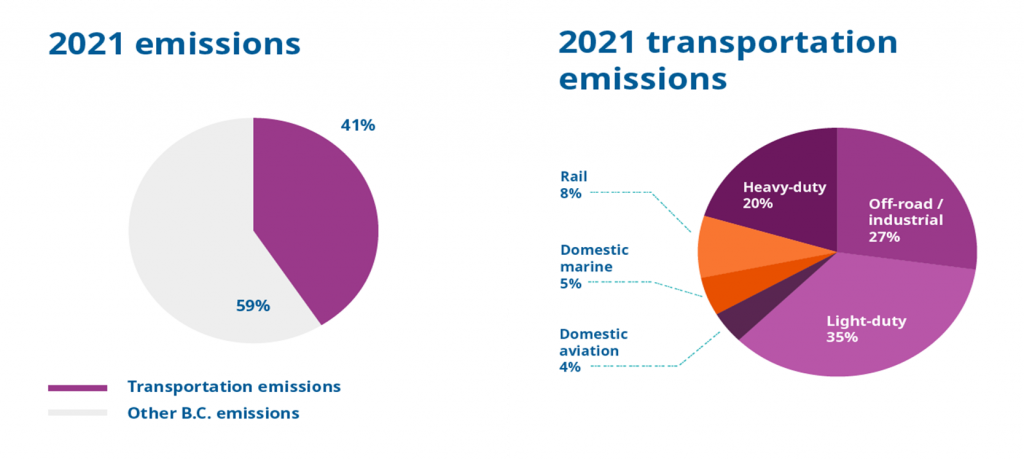Kaushalkumar Upadhyaya | MEL Candidate | Dec 3 2024
Mentors: Diana Aguilar, George Thompson, FortisBC
Abstract
The project examines adoption barriers to medium-duty electric vehicle class 3,4, and 5 in British Columbia for fleet operators, the adoption of which is important for reducing transportation-related Greenhouse gas emissions. Existing incentive programs like federal and provincial initiatives offer rebates and support (Table 1). Despite this, key challenges persist for fleet operators to adopt. Some of the challenges are high upfront costs, insufficient charging infrastructure, limited vehicle range, and regulatory uncertainties.
Recommendations are developed based on fleet operator interviews and research reports, and some of the recommendations are, expanding financial incentive awareness, simplifying the application process, and expanding training programs. These actions can bridge existing gaps, and support BC’s transition to a sustainable, low-carbon transportation system.
Introduction
The government has outlined a plan to reduce transportation emissions by 27-32% by 2030 (CleanBC RoadMap 2030). To achieve that goal, in 2023, light-duty (LD) sales were 22.65% of total LD vehicle sales but medium and heavy-duty (MHD) zero-emission vehicle (ZEV) sales were 0.57% of total MHD registration (2023 ZEV update).
Fig 1: BC emissions in 2021 (CleanBC)

| Vehicle Type based on Class | GV- WR (kg) | Vehicle Example | Federal iMHZEV Max rebate ($) | Provincial Go electric Max rebate ($) | Combine Federal and Provincial Max rebate ($) |
| 3 | 4537-6350 | Walk-in, conventional vans, city delivery | 40,000 | 55,000 | 95,000 |
| 4 | 6351-7257 | Large walk-in, conventional vans, city delivery | 75,000 | 75,000 | 150,000 |
| 5 | 7258-8845 | Large walk-in, city delivery | 75,000 | 75,000 | 150,000 |
Methodology
The study employed a multi-stage methodology:
1. Primary Data Collection: Stakeholder interviews with fleet operators and utility representatives to gather qualitative insights.
2. Secondary Data Collection: Review of government policies, literature, and case studies to identify further insights
3. Barriers Framework: Barriers were categorized into infrastructure, financial, technological, operational, and regulatory challenges.
Result
Various challenges insights from fleet operator interviews and research reports are:

Recommendations
The below recommendations are developed as per interviews with fleet operators and research reports for utility.
| Recommendation | Value to Fleet Operators |
| Expand awareness program | Increases understanding of financial incentives, enabling operators to reduce upfront costs and adopt EVs |
| Simplifying the application process | Reduces administrative burden, making it easier for operators to access subsidies and rebates. |
| Encourage off-peak charging | Lowers operational costs by encouraging energy use during off-peak hours, improving affordability. |
| Streamline Installation Processes | Accelerates infrastructure deployment, enabling faster adoption and operational readiness for fleet electrification |
| Expand Training Programs | Equip operators and technicians with the skills needed for EV maintenance, reducing long-term costs and reliance on third-party services |
| Provide Policy Guidance | Aligns fleet operator strategies with regulatory requirements, reducing compliance risks and improving long-term planning. |
| Align Infrastructure with Policy | Synchronizes charging infrastructure development with evolving regulatory mandates, ensuring operational readiness. |
| Support Real-Time Performance Monitoring | Provides actionable insights on EV usage and battery health, reducing downtime and operational inefficiencies. |
| Introduce Real-Time Charger management tools | Reduces charging downtime and improves route planning through real-time updates on charger availability and reservations. |
Conclusion
The adoption of medium-duty EVs is important for reducing transportation-related emissions in British Columbia. Addressing barriers through financial incentives, improved infrastructure, and operational support can accelerate this transition.
Reference:
1. BC, C. (n.d.). Transportation. Retrieved from cleanbc.gov.bc.ca: https://cleanbc.gov.bc.ca/about-climate-
2. Columbia, G. o. (2023). Zero emission vehicle update. Retrieved from gov.bc.ca: https://www2.gov.bc.ca/assets/gov/farming-natural-resources-and-industry/electricity-alternative-energy/transportation/bc_mhd_zev_2023_consultation_paper_20230516.pdf
3. Hydro, B. (2021). BC Hydro’s 2021 Integrated Resource Plan – Navius Research. Vancouver: BC Hydro.
4. FortisBC. (n.d.). FortisBC.com. Retrieved from https://www.fortisbc.com/news-events/media-centre-details/2024/09/10/fortisbc-seeks-to-meet-additional-power-needs-to-support-continued-growth-in-southern-interior
5. BC, G. E. (n.d.). rebates-for-fleets-and-organizations. Retrieved from goelectricotherrebates.ca
6. BC, G. o. (n.d.). CleanBC Roadmap 2030. Retrieved from gov.bc.ca: https://www2.gov.bc.ca/assets/gov/environment/climate-change/action/cleanbc/cleanbc_roadmap_2030.pdf